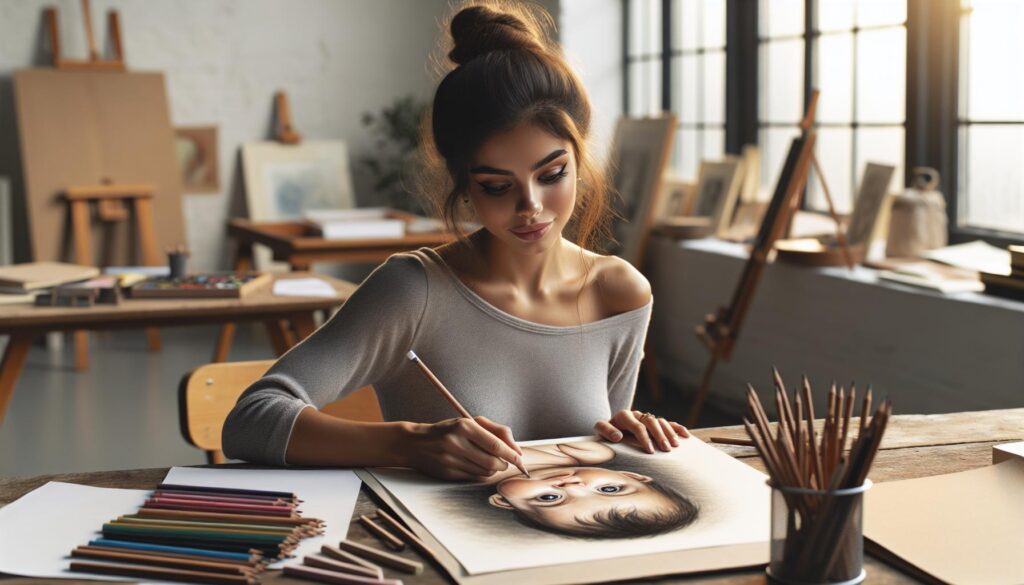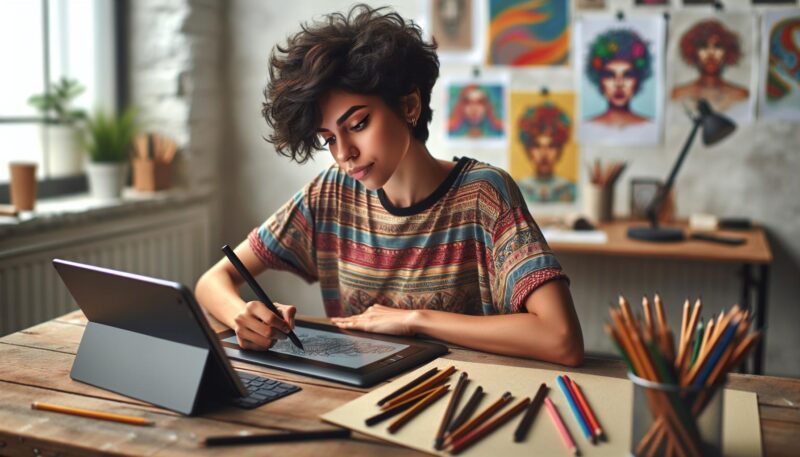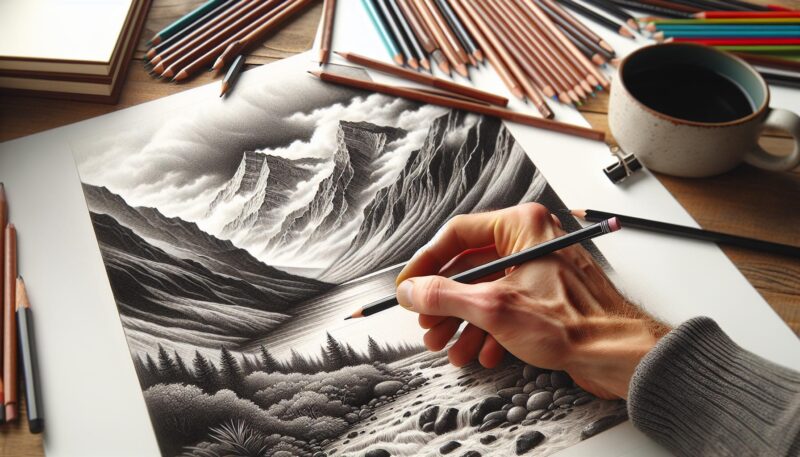
Drawing:whhqztl-dv8= baby has always been a fascinating way to express creativity, and when it comes to capturing the essence of a baby, it takes on a whole new level of charm. I’ve found that drawing babies can be both challenging and rewarding, as their unique features and innocent expressions offer endless inspiration. Whether you’re a seasoned artist or just starting out, there’s something magical about translating those tiny details onto paper.
Key Takeaways
- Artistic Techniques: Mastering the art of drawing babies requires a blend of techniques, observation, and emotional connection to capture their unique features and expressions effectively.
- Key Characteristics: Successful baby drawings emphasize round faces, large eyes, and soft skin, which collectively evoke warmth and tenderness.
- Material Selection: Utilizing various materials like graphite, charcoal, and pastels can affect the texture and vibrancy of the artwork, enhancing the visual appeal.
- Cognitive Benefits: Engaging in drawing babies can stimulate cognitive development, improving observational skills, hand-eye coordination, and problem-solving abilities.
- Promoting Creativity: This art form encourages exploration of unique styles and techniques, fostering individual artistic expression and innovation across other creative projects.
- Emotional Engagement: Personalized baby drawings create emotional connections for parents and children, enhancing relationships and communication through shared artistic experiences.
Drawing:whhqztl-dv8= Baby
Drawing:whhqztl-dv8= baby involves a unique blend of technique, observation, and emotional connection. This art form requires keen attention to light, shadow, and proportion to accurately depict their delicate features. Capturing the innocence of a baby’s expressions entails understanding their emotional range.
Artists often focus on key characteristics such as round faces, large eyes, and soft skin. These elements create a sense of warmth and tenderness, essential in portraying the essence of infancy.
Materials like graphite, charcoal, or pastels convey different textures. Graphite provides detail, while pastels offer a soft, vibrant quality. Experimenting with various techniques enhances the final result and enriches the creative experience.
Patience and practice are vital for mastering this style. Artists can benefit from studying reference images or live models to grasp the subtleties of a baby’s appearance. Observing real-life interactions also fosters inspiration, revealing the joy and wonder inherent to childhood.
Engaging with fellow artists through workshops or online platforms facilitates skill development. Sharing insights and techniques enriches the learning process, making the journey of drawing babies both rewarding and enjoyable.
Features of Drawing:whhqztl-dv8= Baby
Drawing babies incorporates distinct features that emphasize their charm and innocence. Key aspects include unique design elements and a carefully curated color palette.
Unique Design Elements
Unique design elements characterize baby drawings. Round faces create a soft, welcoming shape. Large eyes enhance expressiveness, drawing attention and evoking emotion. Small noses and full cheeks contribute to the adorable appearance. Delicate fingers and toes add to the overall cuteness, accentuating the fragility of infants. Artists can emphasize these features with precise line work and gentle curves, capturing a baby’s essence effectively.
Color Palette and Visual Appeal
Choosing an appropriate color palette is essential for visual appeal. Soft pastels evoke a sense of warmth and tenderness in drawings. Shades like pale pink, lavender, and light blue compliment delicate skin tones, enhancing realism. Light hues can create an ethereal quality that reflects a baby’s innocent nature. Incorporating subtle gradients adds depth, while highlights accentuate roundness and softness. This thoughtful approach to color enhances the emotional impact of the artwork.
Benefits of Using Drawing:whhqztl-dv8= Baby
Drawing:whhqztl-dv8= baby offers a range of benefits that enhance both artistic skills and cognitive abilities. Engaging with this subject can stimulate creativity and observational accuracy.
Cognitive Development
Drawing babies fosters cognitive development by honing observation skills and improving hand-eye coordination. Artists, regardless of experience, learn to analyze proportions, shapes, and details. This analytical process boosts memory retention, as artists recall features like round faces and large eyes. Regular practice enhances problem-solving abilities by helping me explore various techniques to depict delicate features accurately. Overall, drawing encourages critical thinking as I assess light, shadow, and color choices.
Encouraging Creativity
Drawing babies encourages creativity through the exploration of unique styles and techniques. Artists can experiment with different materials, such as charcoal or pastels, to express individual artistic voices. Engaging in this form of art allows me to break free from conventional methods and explore vibrant color palettes. As I capture emotional expressions through art, I also strengthen my imagination and develop personal storytelling methods. This creative outlet can lead to innovative approaches in other artistic endeavors, as I integrate the playful essence of baby drawings into diverse projects.
User Experience and Feedback
Readers often share valuable insights regarding the experience of drawing babies, emphasizing both the emotional and technical aspects involved.
Parental Insights
Parents frequently express joy in observing their children’s reactions to baby drawings. They note that these artworks capture precious moments and evoke emotional connections. Many parents appreciate when artists accurately portray their baby’s unique features, which can deepen their sense of identity and representation. Some mention the impact of incorporating meaningful elements, such as hair color or favorite outfits, allowing the artwork to serve as a cherished keepsake. Feedback reveals that personalized baby drawings often lead to a stronger bond between parent and artist, fostering a collaborative atmosphere where communication enhances creativity.
Child Interaction
Children show curiosity and excitement when engaging with baby drawings. Their responses range from fascination with the colors used to an interest in the details of the artwork. Some children enjoy trying to mimic the artist’s techniques, promoting imaginative play and artistic exploration. Parents report that interactive drawing sessions with their kids cultivate creativity and enhance fine motor skills. Moreover, involving children in the process of creating these drawings encourages them to express their emotions and ideas, making the experience both educational and enjoyable. Overall, this interaction not only strengthens artistic skills but fosters teamwork and bonding between parents and children.
Drawing Babies
Drawing:whhqztl-dv8= baby is more than just an artistic endeavor; it’s a heartfelt journey that captures the essence of innocence and charm. The process not only enhances my skills but also deepens my emotional connection to the subject. Each stroke brings the warmth of their features to life, inviting me to explore new techniques and materials.
Engaging with this art form fosters creativity and encourages collaboration with others, enriching the overall experience. Whether I’m an experienced artist or just starting out, the joy of capturing a baby’s unique spirit never fades. I encourage you to embrace this rewarding challenge and let your creativity shine through every drawing.












